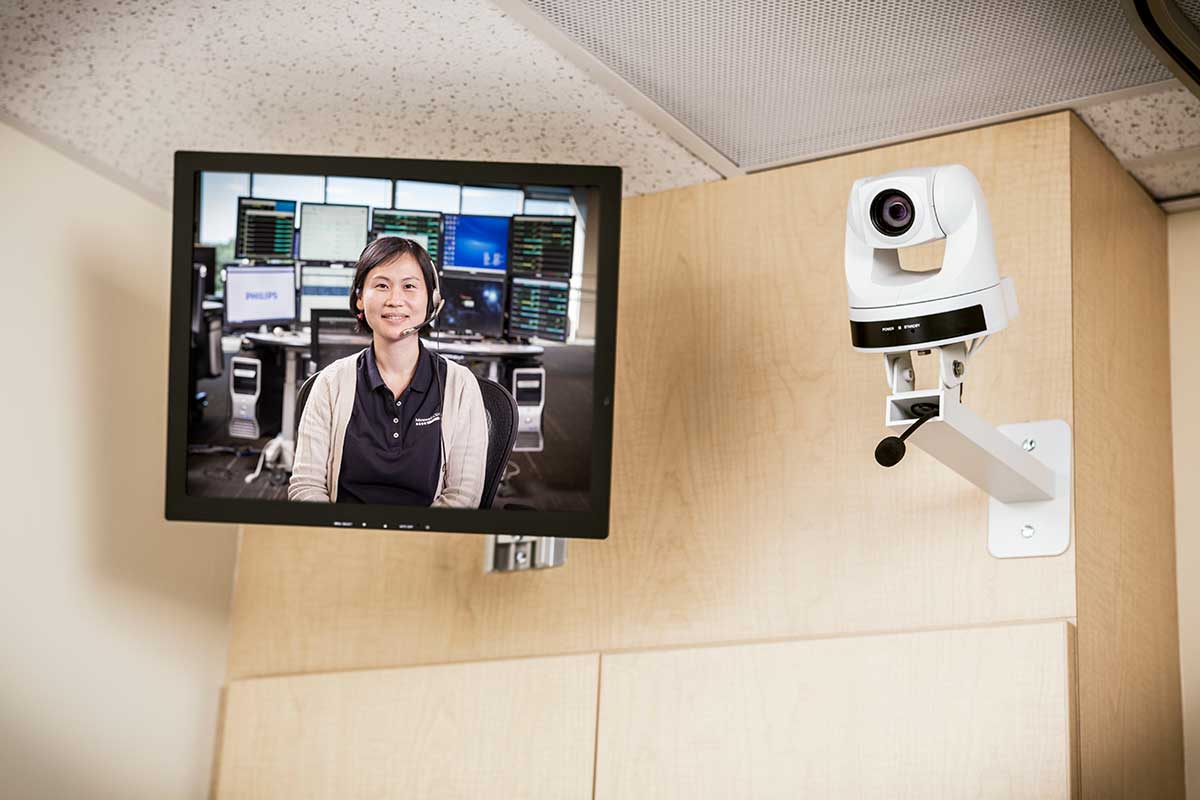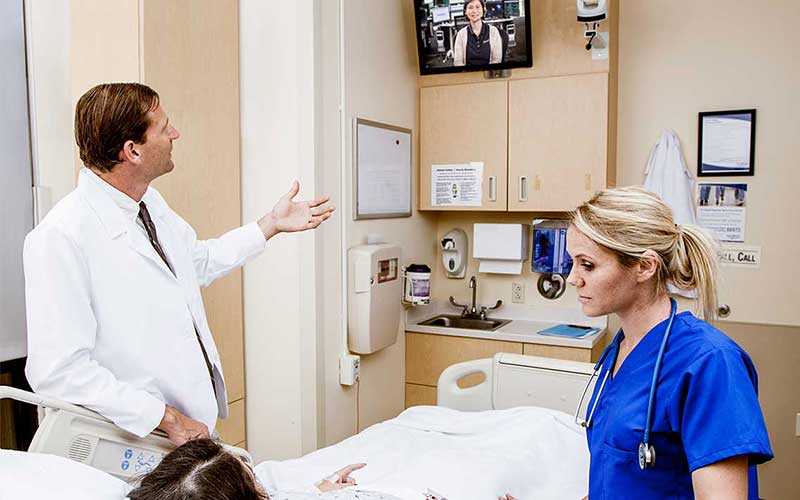
Vidyo Solution Serves as Basis for Advanced ICU Care’s Virtual Health Journey


Vidyo Solution Serves as Basis for Advanced ICU Care’s Virtual Health Journey
Challenge
Advanced ICU Care is a group of intensivists — doctors specially trained in critical care who work in an intensive care unit (ICU) — who offered in-person bedside care. In 2005, the group was asked to provide care to a remote hospital in Missouri. They had to decline because they didn’t have doctors who could consistently make the trip. But that request triggered Advanced ICU Care to find a way to address remote care without commuting.
“One of the myths of telemedicine is that it simply takes bedside care and makes it available remotely. The reality is that, done right, telemedicine actually improves care because there are things you can do when watching from afar – when you’re using technology – that is better or different than being at the bedside.”
–Tom Bobich,
Vice President of Marketing,
Advanced ICU Care
Challenge
Advanced ICU Care is a group of intensivists — doctors specially trained in critical care who work in an intensive care unit (ICU) — who offered in-person bedside care. In 2005, the group was asked to provide care to a remote hospital in Missouri. They had to decline because they didn’t have doctors who could consistently make the trip. But that request triggered Advanced ICU Care to find a way to address remote care without commuting.
“One of the myths of telemedicine is that it simply takes bedside care and makes it available remotely. The reality is that, done right, telemedicine actually improves care because there are things you can do when watching from afar – when you’re using technology – that is better or different than being at the bedside.”
–Tom Bobich,
Vice President of Marketing,
Advanced ICU Care
Solution
In 2006, Advanced ICU Care began its ICU telemedicine management program. In 2011, the group moved its video platform to Vidyo and, today, rooms in its partner hospital ICUs are all supported by Vidyo. Video sessions can be easily initiated either by the patient or care team, and a remote doctor or nurse can check in when necessary to monitor patients.
A constant feed of information is available to Advanced ICU Care’s doctors and nurses, incorporating all the data ordinarily available at bedside. This includes EHR data, lab results, and even the patient’s vital signs. The technology can raise warnings when necessary, set up alerts, handle workflows, and offer constant monitoring. In addition, video enables doctors and nurses at any of Advanced ICU Care’s operations centers to “visit” patients in any partner hospital ICU, keeping the partner hospital aware of a patient’s developing conditions and issues.

Results
By the end of 2009, Advanced ICU Care had six virtual ICU clients. The organization’s care model helps its partner hospitals deliver 24/7 gold-standard intensive care to their patients, which results in more lives saved, shorter ICU stays, and avoidance of complications such as sepsis and infections.
According to Tom Bobich, vice president of marketing, Advanced ICU Care today is a clinical telemedicine service licensed to provide care in more than 75 hospitals in 25 states coast-to-coast. Doctors, critical care nurses, and nurse practitioners — all of whom are trained in critical care — work from its nine care centers. Each of those centers is connected to the full range of client hospitals, so, for example, a patient in South Dakota might access care from a doctor in New York City, a nurse in Houston, or a nurse practitioner in St. Louis.
“Video is critical to what we do because our doctors and nurses need to be able to see into a room, observe a patient, or see the patient’s IV bag,” Bobich said. “But more important is the connection video makes, which allows our staff to speak with the patient’s family or the bedside nurse or doctor.”
Bobich gave an example: In the middle of the night, a junior nurse might have to intubate a patient, but that nurse might be relatively inexperienced. With Vidyo, one of Advanced ICU Care’s doctors or nurses can coach them remotely.
“One of the myths of telemedicine is that it simply takes bedside care and makes it available remotely,” Bobich said. “The reality is that, done right, telemedicine actually improves care because there are things you can do when watching from afar — when you’re using technology — that are an improvement over bedside care. For example, you’re never in a situation where a doctor is stuck in a room at one side of the hall and can’t tend to a patient on the other side of the hall. You’ve got a backup ready to effectively address that situation if you’re staffed correctly.”
Future Opportunities
“The outlook for telemedicine is incredible,” Bobich said. “We believe that we’re now witnessing the transition from ‘if’ to ‘when,’ For many years, it was ‘If telemedicine would take off….’ Now we’re seeing the ‘When it becomes reality….’ That’s both because hospitals are taking telemedicine on in clinical situations and because consumers are using it in direct-to-consumer care or as part of their health plan.”
Get In Touch With Sales
Learn more about how Vidyo can provide the solution you need.